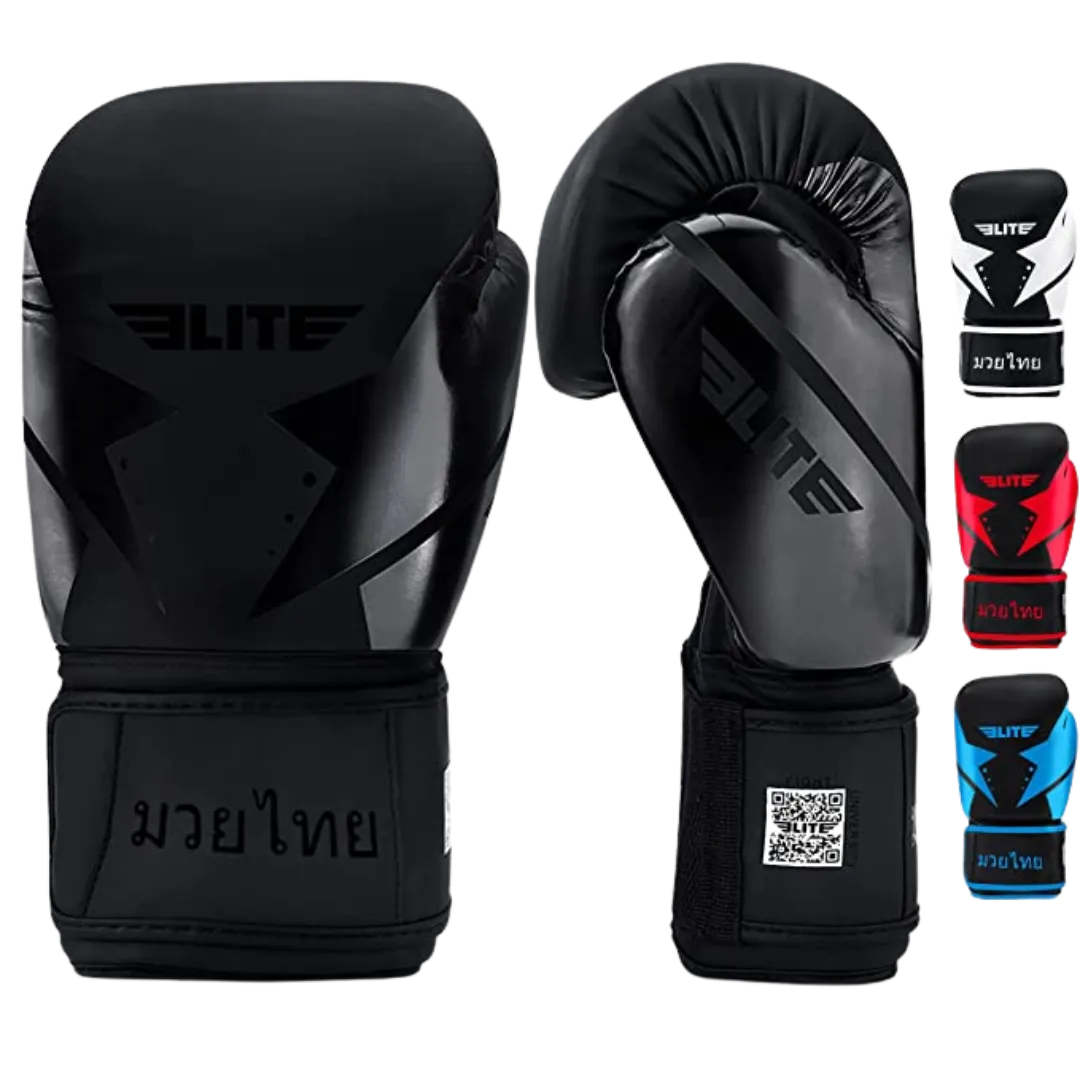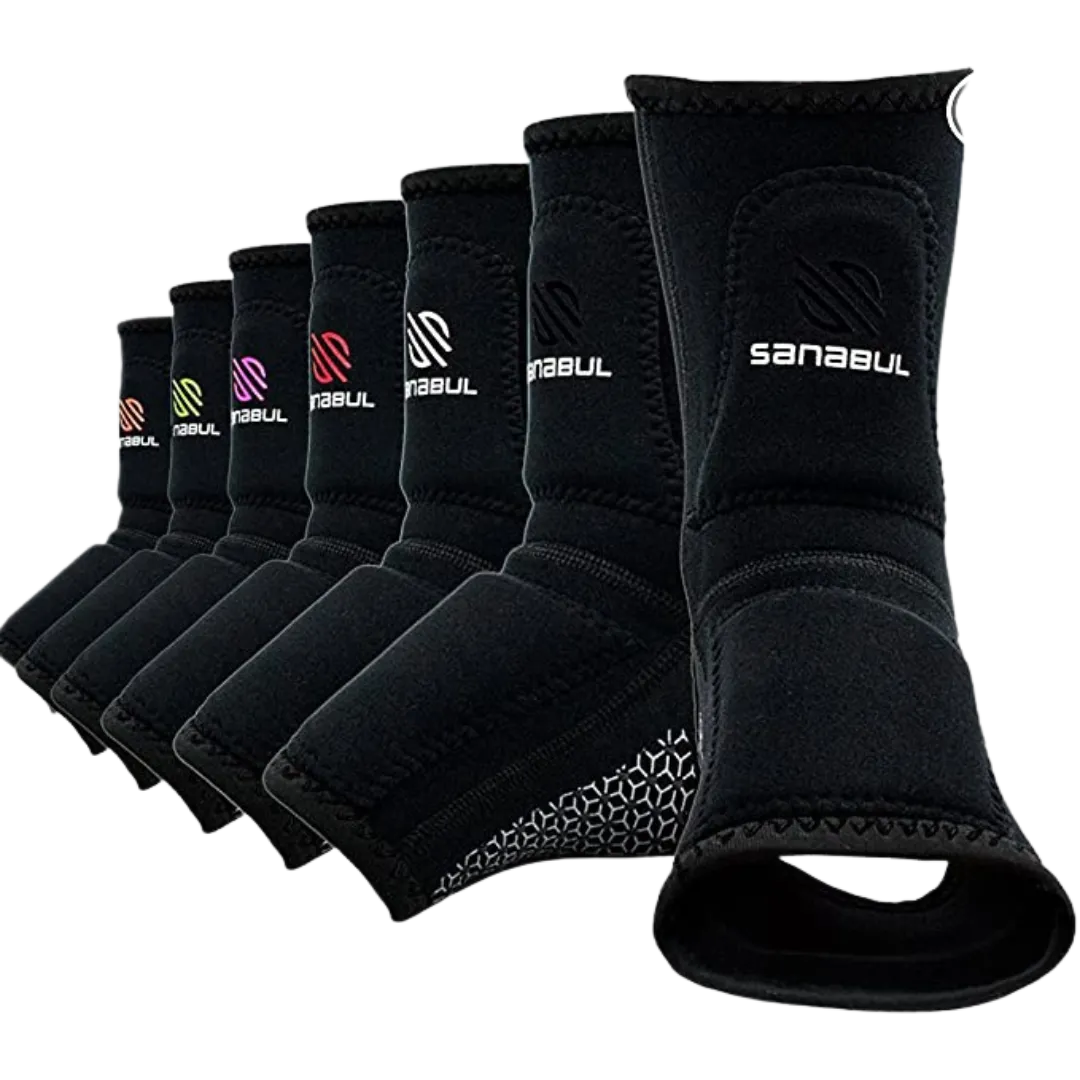Muay Thai Gear and Guides
Your Muay Thai Equipment Will Help or Hinder.
I research gear so you make the best decision as you begin your journey and grow!
Gloves
Possibly the most subjective piece of gear you will own. Here you will find what to look for in muay thai gloves. Beginners save money now and start your research for your upgrades!
Shin Guards
Conditioning your shins will come in time, but protect them now and don't feel as bad kicking your friends when sparring. PLUS, some extras to help you avoid ripping your achilles skin.
Shorts
Traditional Muay Thai shorts are a popular design but now there are more options. From material to features, I will explain the pros and cons.
ABOUT MTG
Why You Can Trust This Site and Me For Muay Thai Gear
There is no problem not knowing what to buy, especially when you are just starting out. It is intimidating making sure you have a respected brand and your gear has the best design for Muay Thai.
Luckily, I am wildly analytical and have a ton of experience with analysis paralysis. You are going to benefit from hours of research including watching videos, reading other review sites, contacting the brands themselves, and trying out the gear.
I promise to be honest with you and share our experience.
PLUS, I created this site to help my friends and fellow students make easy decisions. It is a labor of love, so you get my passion and not my attempt to sell you something you don't need. The only way I get paid is through affiliate links. If you click on a product you like and purchase it, I get the smallest amount in return. This does not sway our suggestions in any way.
Headgear
Not every gym requires you to get your own headgear. But, I suggest you do. You don't know if the last person cleaned them properly, and that is NOT a problem you want.
Mouth Guards
It is way more expensive to fix a chipped tooth than to have a mouth guard...or two...or maybe even 20 or more. Get the point?
Hand Wraps
Seems basic, right? A wrap around your hand. What about size, elastic vs non, slip-ons (with gel!)...get the idea?
Foot/Ankle Wraps
Much like hand wraps but for the opposite end of your body. After a few kicks, you'll see why I recommend them.
Elbow Pads
When the time comes and your gym allows you to spar with elbows, you will need pads. Your partner doesn't want a split eyebrow.
Knee Pads
Another buffer that allows you to throw a little harder but not hurt your partner. Plus, protect your joints as you get older.
"Thai" Pads
These are the most popular pads at your gym. However, sometimes the gyms are destroyed, so own a pair.
Focus Mitts
Great for increasing accuracy and speed. These little pads have huge benefits and can be used anywhere.
Belly Pads
Conditioning your abs in the beginning is great! As you level up, the teeps get tougher!
Strike Shield
This is a very versatile pad and there are slight features that matter quite a bit. You will love this for training with strong kickers.
Thigh Pads
Dead legs hurt! Believe me, I will get to a great story in here of a week long dead leg. These also help you flex into kicks.
Shirts/Tops
What's more important than a cool graphic? Discover why I choose certain materials, length, and brands.
Gym Bags
A big duffel works and so does a backpack. But, what if you ride a motorcycle - where are the waterproof bags? See our suggestions.

Mobile SEO Keywords: Optimizing for On-the-Go Searches:
In the ever-evolving digital marketing landscape, mobile keyword research has emerged as a crucial element for success. With the majority of internet users accessing the web via mobile devices, understanding and optimizing for mobile search behavior is not just an option, but a necessity. This article delves into the nuances of mobile keyword research, highlighting its differences from desktop keyword strategies, and offering insights into maximizing its potential for your digital marketing efforts.
"Mobile keywords" refer to specific search terms or phrases that users commonly input while conducting searches on mobile devices.
What's the Difference Between Mobile and Desktop Keywords?
Mobile vs. Desktop Keywords
The primary distinction between mobile and desktop keywords lies in their length and intent. Mobile keywords are typically shorter, often tailored for quick searches or voice-driven queries. Users on mobile devices tend to look for immediate, concise answers, reflecting a different user behavior compared to desktop searches.
Shorter and Voice-Driven
Voice search has become increasingly prevalent in mobile queries. Users often use natural language and conversational phrases, making mobile keywords more colloquial and direct.
Localized Nature of Mobile Searches
Mobile searches often have a strong local component. Users on the go are more likely to search for services or products "near me," making geographically specific keywords vital for mobile SEO.
The Benefits of Mobile Keyword Research
Optimizing for Mobile Users
Mobile keyword research allows marketers to tailor their content specifically for mobile users, enhancing user experience and engagement. This optimization leads to content that resonates better with the mobile audience, potentially increasing dwell time and reducing bounce rates.
Impact on Visibility and Traffic
Understanding the difference between mobile and desktop keywords can significantly impact a website's visibility and traffic. Mobile-optimized keywords cater to a large segment of internet users, ensuring that your content reaches its intended audience effectively.
Conversion and Sales Boost
By targeting mobile-specific keywords, businesses can tap into a market with high conversion potential. Mobile users often exhibit high intent, and optimizing for mobile searches can lead to increased conversions and sales.
Types of Mobile SERPs
Variety in Mobile SERPs
Mobile Search Engine Results Pages (SERPs) vary significantly from desktop SERPs. They often prioritize local listings, map packs, and provide results more aligned with the immediate needs and location of the user.
Influence of Location and Device
The type of device and the user's location play a crucial role in shaping mobile SERPs. This variability offers valuable insights into search intent and user behavior, which can be leveraged for more targeted keyword strategies.
Tools for SERP Analysis
Tools like Semrush's Keyword Overview and Serpstat are instrumental in tracking and analyzing mobile SERPs. They provide data on how different keywords perform across various locations and devices, offering a comprehensive view of the mobile search landscape.
Understanding Your Target Audience
Before diving into mobile keyword research, it's essential to have a clear understanding of your target audience. This section will guide you through identifying and analyzing your audience to ensure your mobile SEO strategy is effectively aligned with their needs and behaviors.
Identifying Your Target Market
Steps to Define the Target Market
Identifying your target market involves analyzing data from website analytics software like Google Analytics or HubSpot's Sources report. This data provides insights into who your audience is, what devices they use, and how they interact with your content.
Tools for Market Identification
Utilizing tools such as Google Analytics helps in understanding the demographics, interests, and online behavior of your audience. This information is crucial in tailoring your mobile keyword strategy to match the specific needs and preferences of your target market.
Analyzing the Needs of Your Target Audience
Understanding the needs of your target audience is key to effective mobile keyword research. This involves delving into user intent and behavior, ensuring that your keyword strategy aligns with what your audience is searching for on their mobile devices.
How To Find Mobile Keywords
Finding the right mobile keywords is a multi-step process that involves understanding your current SEO standing, the specific nuances of mobile searches, and the best practices for identifying keywords that will drive traffic and conversions.
Identify Keywords You Already Rank For
Leveraging Existing Rankings
Using tools like Google Search Console, you can identify which keywords your site currently ranks for. This information provides a baseline for understanding your existing mobile SEO performance.
Performance Analysis
Analyzing the performance of these keywords, especially in the context of mobile, is crucial. Tools that provide insights into both desktop and mobile performance help in understanding how your content resonates with different audiences.
Choosing Traditional vs. Mobile Keywords
Comparing Keyword Types
The choice between traditional and mobile keywords hinges on understanding the unique aspects of mobile searches. Mobile keywords are often shorter, more conversational, and localized, reflecting the on-the-go nature of mobile users.
Optimization for Mobile
Optimizing keywords for mobile devices involves focusing on these shorter, more direct phrases that mobile users are likely to use. This includes incorporating local SEO strategies to capture localized nature of mobile searches.
Location-Based Keywords
Importance in Mobile Searches
Location-based keywords are pivotal in mobile SEO. Phrases like "near me" or "nearby" dominate mobile queries, as users often seek immediate solutions or services in their vicinity.
Optimizing for Specific Locations
To capitalize on this trend, it's essential to optimize your content for specific cities or geographic locations. This includes tailoring your keywords to include local landmarks, city names, or region-specific services.
Using Long-Tail Keywords to Increase Organic Traffic
Targeting Niche Audiences
Long-tail keywords are highly specific and often less competitive. They target niche audiences and can significantly improve search visibility for mobile users, attracting more qualified leads.
Incorporating into SEO Strategies
Incorporating long-tail keywords into your SEO strategy is crucial for capturing the nuanced and specific queries of mobile users. This approach not only enhances visibility but also aligns with the specific needs and questions of your audience.
Generating a List of Popular and Relevant Keywords for Your App/Website/Business
Comprehensive Keyword Research
Developing a list of relevant keywords involves a mix of competitor analysis, thematic research, and the use of keyword research tools like Serpstat and WordStream's Free Keyword Tool.
Strategies for Keyword Generation
Analyzing competitor keywords can reveal gaps and opportunities in your market. Thematic research helps in understanding broader trends and user interests, while keyword tools provide data-driven insights into popular and effective keywords.
Utilizing Google Keyword Planner and Other Tools to Find Relevant Keywords
Leveraging Google Keyword Planner
Google Keyword Planner is a fundamental tool for keyword research. It provides accurate data directly from Google, helping you to identify relevant keywords and understand their search volume and competition.
Creating a Keyword Plan
Using Google Keyword Planner, you can create a comprehensive keyword plan by searching for new keywords or uploading existing ones. This process helps in refining your mobile keyword strategy to ensure it aligns with user search behaviors and trends.
Measuring Search Volume and Performance for Mobile Users
Understanding Mobile User Behavior
Analyzing the monthly search volume for mobile users versus desktop users is crucial. This data provides insights into the preferences and trends of mobile users, helping you tailor your content to their specific search habits.
Search Query Trends and Non-Text Searches
Understanding the types of non-text searches, such as voice and image searches, is becoming increasingly important in mobile SEO. These searches require a different approach to keyword optimization, focusing on natural language and visual content.
Analyzing Search Query Trends that Lead to Conversions on Mobile Devices
Identifying High-Performing Keywords
To maximize conversions, it's essential to analyze the search query trends on mobile devices. This involves examining the keywords and phrases that lead to conversions and aligning them with the needs and intent of your target audience.
Utilizing Tools for Competitor Analysis
Tools like Serpstat can be instrumental in conducting competitor analysis and gathering insights on successful keyword strategies. This information helps in refining your mobile keyword approach to focus on high-converting phrases.
Integrating Mobile Keywords into Your Google Business Profile
Effective Incorporation of Mobile Keywords:
Business Description Optimization: Start by weaving mobile keywords into your business description. Ensure they are relevant to your services and location. For instance, if you're a bakery in Austin, use phrases like "fresh pastries in downtown Austin" or "best coffee shop near Austin city center."
Contextual Use in Posts and Updates: Regularly post updates, offers, or events using mobile keywords. For example, a post about a weekend special can include phrases like “weekend brunch deals in Austin.”
Responses to Reviews: When responding to reviews, subtly include mobile keywords. For a positive review, you might say, “Thank you for enjoying our downtown Austin bakery’s signature cakes!”
Maintaining Readability and Engagement:
Natural Keyword Integration: Ensure that the use of keywords feels natural and adds value to the description or post, rather than just keyword stuffing.
Engaging Content: Create content that not only includes keywords but also engages and informs the reader, like sharing local events or special promotions relevant to your area.
Leveraging Mobile Keywords for Enhanced User Engagement
Creating Compelling Posts:
Event and Offer Announcements: Use mobile keywords when announcing special events, offers, or new products. For example, “Join us for live music this Friday at our cozy Austin café!”
Storytelling with Local Flavor: Share stories or updates that connect your business to the local area, using mobile keywords to enhance local relevance.
Improving Profile Relevance and Appeal:
Targeted Updates: Tailor your posts to address the common queries of mobile users, like “best lunch spots in Austin” or “evening entertainment in downtown Austin.”
Visual Content: Include images and videos in your posts, tagged with mobile-friendly descriptions and captions.
Monitoring and Adapting Your Keyword Strategy
Regular Performance Reviews:
Analyzing Search Results: Regularly check how your Google Business Profile performs in mobile search results for your targeted keywords.
Adjusting Keywords: Be prepared to tweak your keyword strategy based on performance data, seasonal trends, or changes in local search behavior.
Using Analytics Tools:
Tracking Engagement and Traffic: Utilize tools like Google Analytics to monitor the traffic and engagement levels driven by your mobile keywords.
Identifying Successful Keywords: Focus on keywords that bring the most engagement and conversions, and adjust your strategy accordingly.
The Competitive Edge of Mobile-Optimized Profiles
Summarizing Benefits:
Enhanced Local Visibility: Emphasize how mobile keyword optimization can significantly improve your visibility in local searches.
Increased Engagement: Highlight the potential for increased customer interactions and conversions through a well-optimized profile.
Continual Refinement:
Staying Ahead: Encourage businesses to stay informed about local search trends and continuously refine their mobile keyword strategy.
Adapting to Changes: Remind businesses that the digital landscape is dynamic, and staying adaptable with their keyword strategy is key to maintaining a competitive edge.
Types of Non-Text Searches
Voice and Image-Based Searches
Non-text searches, particularly voice and image-based searches, are increasingly popular on mobile devices. Optimizing for these types of searches involves understanding the unique characteristics of voice and visual queries.
Factors for Keyword Optimization
When optimizing for non-text searches, consider the conversational nature of voice searches and the descriptive elements of image searches. This approach ensures that your content is discoverable and relevant to the evolving search behaviors of mobile users.
Embracing the Mobile-First World with Strategic Keyword Research
In the digital age, where the majority of searches are performed on mobile devices, understanding and implementing effective mobile keyword research is not just beneficial—it's essential. This comprehensive guide has walked you through the intricacies of mobile keyword research, from distinguishing between mobile and desktop keywords to leveraging these insights for enhanced user engagement and conversions.
The journey through mobile keyword research is a testament to the dynamic nature of digital marketing and the importance of adapting to the evolving search behaviors of mobile users. By integrating mobile-specific keywords into your Google Business Profile, you're not only optimizing for search engines but also connecting more authentically with your local audience. The strategies outlined here, from leveraging location-based keywords to adapting to non-text searches, are designed to give your business the competitive edge it needs in the mobile-first world.
As you apply these insights and strategies, remember that the realm of mobile keyword research is ever-changing. Regularly monitoring and adapting your keyword strategy is crucial to stay ahead in the game. Utilize the tools and techniques discussed to continually refine your approach, ensuring your content resonates with the mobile audience and drives meaningful engagement.
Now, as you embark on this journey of mobile keyword optimization, don't hesitate to seek further expertise and guidance. For those looking to delve deeper and gain more specialized insights into optimizing their online presence, particularly in the New Jersey area, our NJ SEO page offers a wealth of knowledge and services tailored to your needs. Visit our NJ SEO page to explore how we can help elevate your business in the mobile-first landscape, ensuring you stay ahead of the curve in this digital era.
Take the next step in your mobile keyword research journey. Visit our NJ SEO page today and unlock the full potential of your digital marketing strategy: https://nextstepconnect.com/nj-seo
Mobile Keyword Optimization Checklist
Optimizing for mobile keywords is a strategic process that can significantly enhance your online presence and engagement with mobile users. Based on the insights from our article, here’s a comprehensive checklist to guide you through optimizing your content and Google Business Profile for mobile keywords:
1. Understand the Difference Between Mobile and Desktop Keywords
Recognize that mobile keywords are typically shorter and more conversational.
Consider the localized nature of mobile searches.
2. Conduct Comprehensive Mobile Keyword Research
Use tools like Google Keyword Planner, Semrush, and Serpstat for keyword discovery.
Identify keywords you already rank for using Google Search Console.
Analyze the needs and search behaviors of your target audience.
3. Choose the Right Keywords
Select a mix of traditional and mobile-specific keywords.
Incorporate location-based keywords like “near me” or “nearby.”
Utilize long-tail keywords for niche targeting and increased organic traffic.
4. Optimize Your Website for Mobile Keywords
Ensure your website content includes mobile-specific keywords naturally.
Adapt your website’s meta titles and descriptions to include mobile keywords.
Create mobile-friendly content that’s easy to read on small screens.
5. Integrate Mobile Keywords into Your Google Business Profile
Embed mobile keywords in your business description, posts, and responses to reviews.
Maintain natural and contextual use of keywords for readability and engagement.
6. Leverage Mobile Keywords for User Engagement
Use mobile keywords in posts and updates to resonate with a mobile audience.
Create compelling content that incorporates mobile keywords effectively.
7. Monitor and Adapt Your Keyword Strategy
Regularly review the performance of your keywords in mobile search results.
Use analytics tools to track the effectiveness of your mobile keywords.
Be prepared to adjust your strategy based on performance data and search trends.
8. Optimize for Non-Text Searches
Consider the unique aspects of voice and image searches in your keyword strategy.
Optimize content for the conversational nature of voice searches and descriptive elements of image searches.
9. Stay Informed and Adapt to Changes
Keep up-to-date with the latest trends in mobile search and keyword optimization.
Continuously refine your strategy to stay competitive in the mobile-first landscape.
10. Evaluate and Refine Regularly
Conduct periodic evaluations of your mobile keyword strategy’s effectiveness.
Refine and update your approach based on evolving user behaviors and market trends.
Featured Muay Thai Gear
Below are featured because I have personally used them and they will get you started.
You won't be investing a ton of money and you will have the quality to keep you safe and comfortable.




















